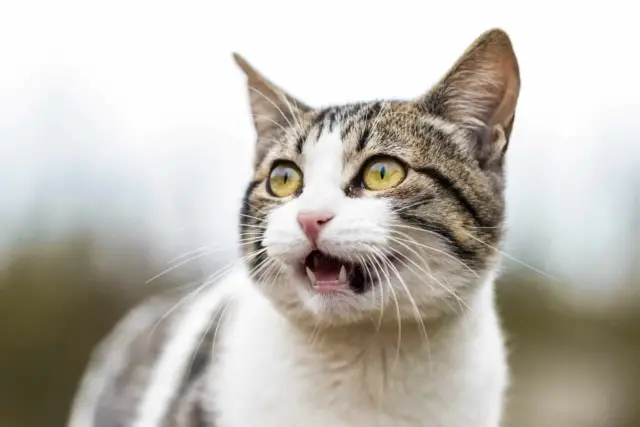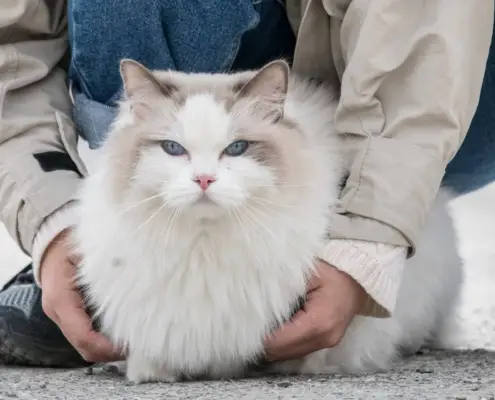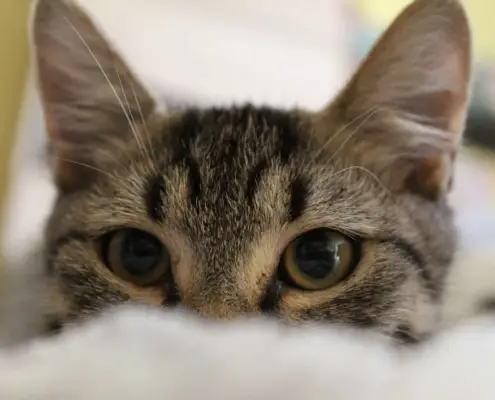
Cats are fascinating creatures. They have a unique way of communicating with us and each other. One of the most intriguing behaviors they exhibit is cat chattering. If you’ve ever seen your cat sitting by the window, watching birds or squirrels, and making a strange clicking sound, then you’ve witnessed cat chattering firsthand. But what exactly is cat chattering and why do cats do it? In this article, we will delve into the world of cat chattering, exploring the science behind it, the common reasons why cats chatter, and how to interpret this behavior.
What is cat chattering?
Cat chattering is a behavior often observed in domestic cats when they are excited, particularly when they see prey. It is characterized by a series of rapid teeth chattering or clicking sounds. This behavior is commonly accompanied by a vibrating or trembling motion of the cat’s jaw. Cat chattering can be quite mesmerizing to watch, as it seems to mimic the action of a cat biting into its prey. However, it’s important to note that cat chattering is not an attempt to catch the prey, but rather a response to the excitement and frustration of being unable to reach it.
The science behind cat chattering
To understand why cats chatter, it’s important to look at their evolutionary history. Cats are natural hunters, and their ancestors relied on their hunting skills to survive. Chattering is believed to be an instinctual behavior that stems from their predatory nature. When a cat sees prey, its natural instinct is to remain silent to avoid alerting the prey. The chattering sound is thought to be a way for the cat to express its frustration and excitement without making any noise that could scare away the prey. It’s almost as if the cat is mimicking the sound of biting into its prey, even though it cannot physically reach it.
Common reasons why cats chatter
There are several reasons why cats chatter, and it’s not limited to seeing prey. One common reason is frustration. Cats are curious animals, and when they see something they can’t reach, such as a bird outside the window or a toy just out of reach, they may start chattering. It’s their way of expressing their desire to catch the object of their attention. Another reason cats chatter is anticipation. For example, if you’re preparing their favorite treat or getting their food ready, they may start chattering in excitement, eagerly waiting for their meal. Additionally, some cats may chatter when they are feeling anxious or stressed. It’s their way of releasing tension and coping with their emotions.
Understanding the different types of cat chatter
Not all cat chattering is the same. There are different types of chattering sounds that cats may make, each with its own meaning. One type of chatter is the high-pitched, rapid teeth chattering, which is often associated with excitement and frustration. Another type is a softer, slower chattering sound, which can indicate curiosity or anticipation. Cats may also make a combination of chattering and purring sounds, which could mean they are feeling content and relaxed. Understanding the different types of cat chatter can help you better interpret your cat’s emotions and needs.
Is cat chattering a cause for concern?
Cat chattering is generally not a cause for concern. It is a natural behavior that many cats exhibit. However, if you notice any sudden changes in your cat’s chattering behavior, such as excessive chattering or a complete absence of chattering, it may be worth consulting with a veterinarian. These changes could be a sign of an underlying health issue or stress. In most cases, though, cat chattering is harmless and simply a unique way for cats to express themselves.
How to encourage cat chattering
If you enjoy watching your cat chatter and want to encourage this behavior, there are a few things you can do. Providing your cat with interactive toys, such as feather wands or puzzle feeders, can stimulate their natural hunting instincts and trigger chattering. Creating a safe and stimulating environment for your cat with plenty of opportunities for exploration can also encourage chattering. Additionally, spending quality time with your cat through play and affection can strengthen your bond and make them feel more comfortable expressing themselves through chattering.
Tips for interpreting your cat’s chatter
While cat chattering can be mesmerizing to watch, deciphering its meaning can be a bit challenging. However, there are some tips that can help you interpret your cat’s chatter. Pay attention to the context in which the chattering occurs. Is your cat looking out the window or watching a bird? This could indicate excitement and frustration. Is your cat chattering while you’re preparing their food? This could be a sign of anticipation. Additionally, observe your cat’s body language. Are they crouched low to the ground or in a pouncing position? This could indicate that they are ready to pounce on their prey. By observing your cat’s behavior and taking note of the context, you can gain a better understanding of what their chatter means.
Cat chattering in popular culture
Cat chattering has captured the attention of many cat lovers and has even made its way into popular culture. You may have seen videos online of cats chattering away while watching birds on TV or reacting to toys. Cat chattering has become a source of entertainment for many, showcasing the unique behaviors of our feline companions. Memes and gifs featuring chattering cats have also become popular on social media, further highlighting the fascination with this intriguing behavior.
Embracing the uniqueness of cat chattering
Cat chattering is a fascinating behavior that adds to the charm and mystique of our feline friends. It is a way for cats to express their excitement, frustration, and curiosity. While the science behind cat chattering is still being explored, there is no denying its captivating nature. By understanding the reasons behind cat chattering and learning how to interpret your cat’s chatter, you can deepen your bond with your feline companion and appreciate the uniqueness of their communication style. So next time you hear your cat chattering away, take a moment to marvel at the intricate world of feline communication.
If you enjoyed my article, I would appreciate you sharing it with your network.

Sima Ndlebe
Sima writes for CatBuzz. He is interested in Cats, Health and Fitness, and Entrepreneurship.
Published: 14 November 2023




